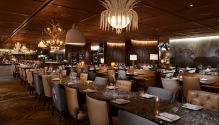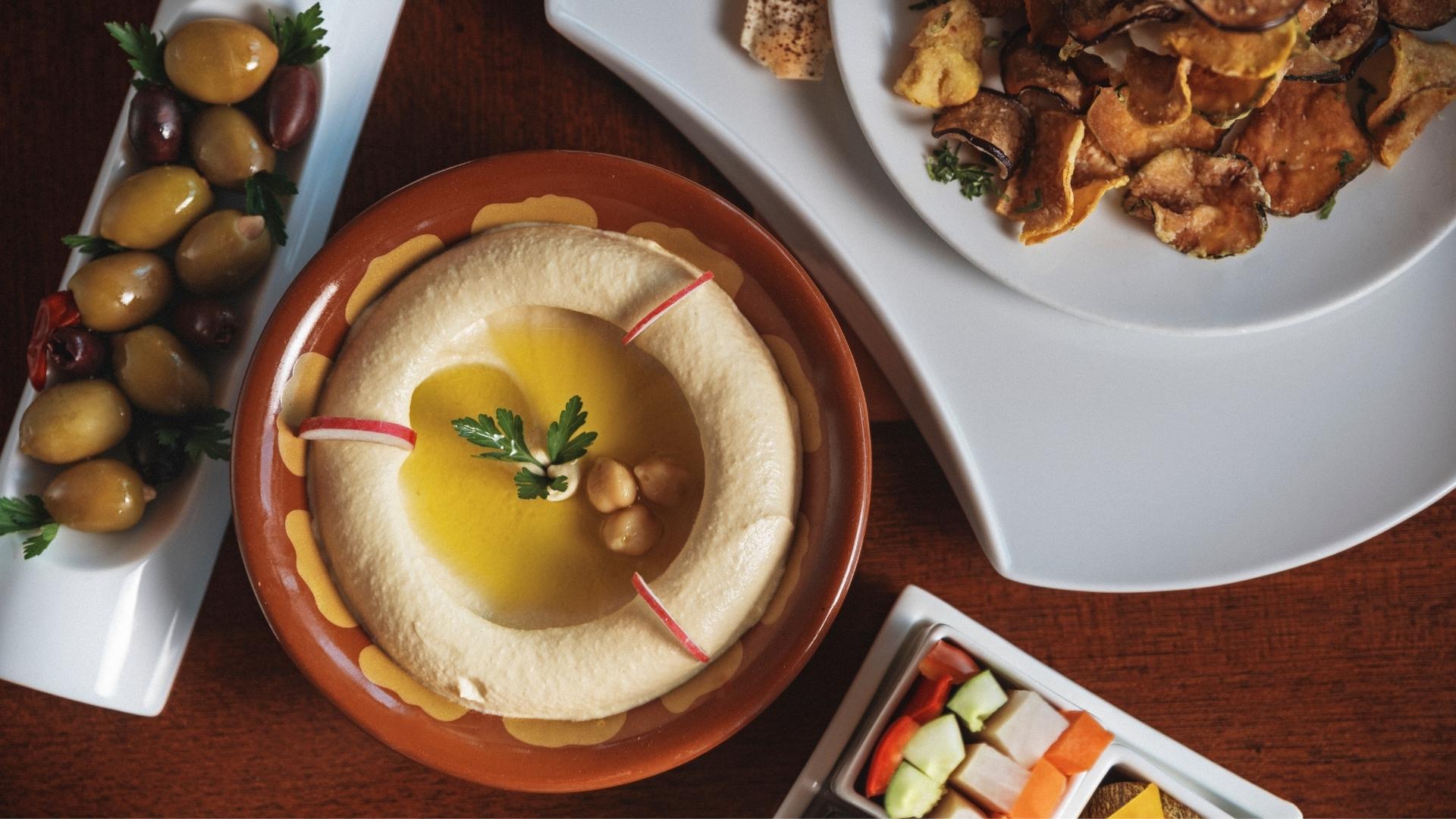Saffron, Sumac and Storytelling
With storytelling, ingredient authenticity, and regional nuance at the forefront, a handful of high-end restaurants in India are reshaping perceptions of Middle Eastern food—from casual staples to cultural statements.
By Deepali Nandwani
There’s more to Middle Eastern cuisine than we realise. Yes, there’s labneh, falafel, hummus, and pita bread. But the food from this region—which spans the Arabian Peninsula, the Levant, Turkey, Egypt, Iran, and Iraq—goes far beyond these familiar staples.
Indians, even the less adventurous, have long been connoisseurs of Middle Eastern cuisine. Its bold flavours, aromatic spices, and hearty dishes have earned it a special place in the country’s culinary landscape. Yet, in India, our experience of the cuisine has largely remained limited to hummus platters and falafel.
Till now. A new wave of fine-dining restaurants—both standalone venues and those housed in luxury hotels—is shifting the narrative. These places are pushing the boundaries of tradition, serving inventive dishes that offer a plethora of flavours and reveal the true depth and diversity of Middle Eastern culinary heritage.
Here are our favourites from across India.
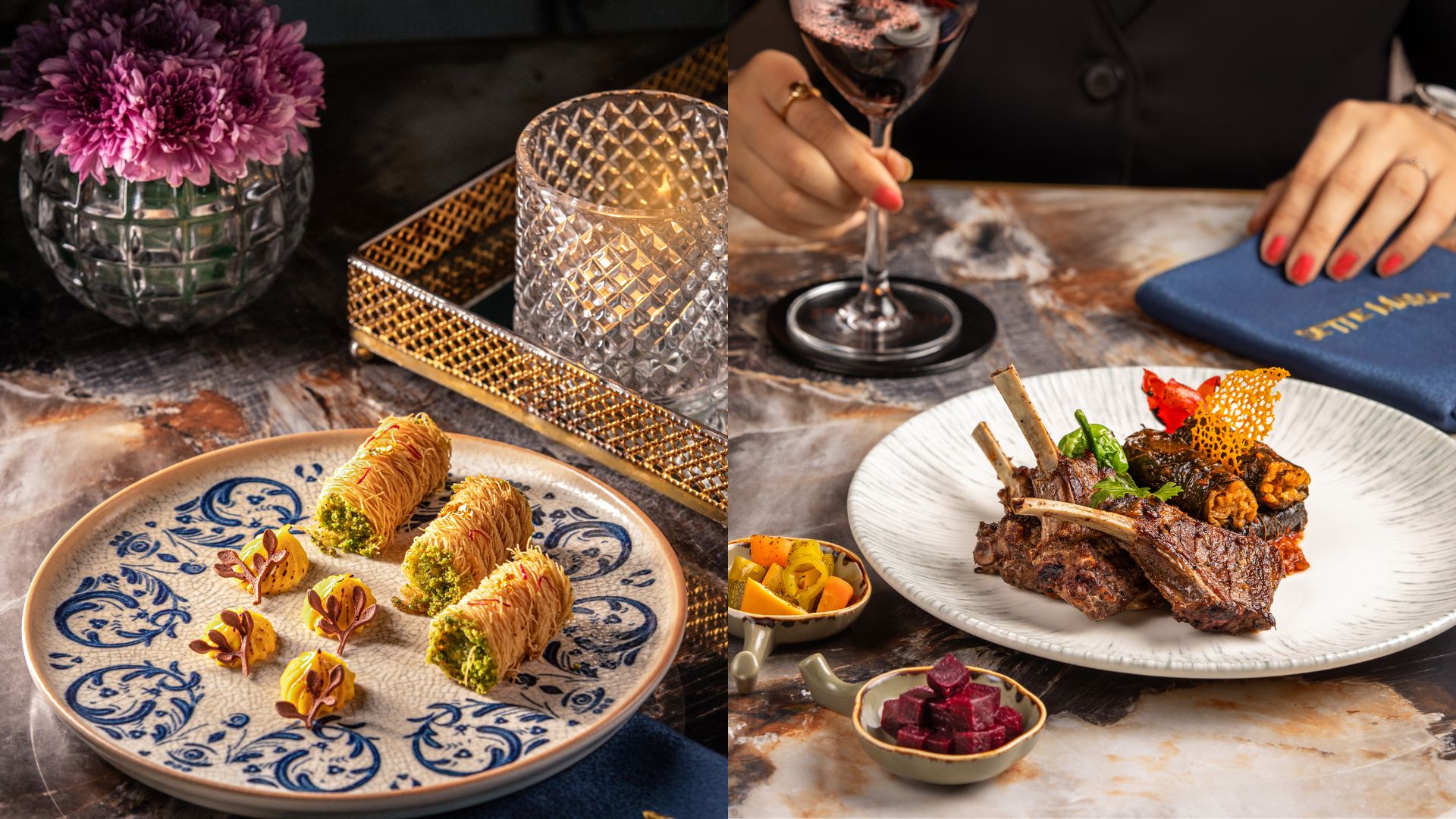
Indians have long been connoisseurs of Middle Eastern cuisine.
Souk-The Taj Mahal Palace Mumbai
Perched on the rooftop of The Taj Mahal Palace, Mumbai, with a bird’s-eye view of the Arabian Sea, Souk is an IHCL classic. “What sets us apart is the authenticity of our recipes, many of which are guided by our Syrian masterchef, ensuring true-to-origin flavours,” says Executive Chef Amit Chowdhary.
The space channels the spirit of a Middle Eastern bazaar. On the menu: delicately spiced tagines, mezzes, and grill platters. “Traditionally, Indian diners weren’t familiar with Middle Eastern cuisine beyond a few well-known items. However, in recent years, there has been a noticeable shift. More people are exploring the cuisine in its depth and diversity, venturing beyond the basics into regional specialities. At Souk, we’ve seen a growing appreciation for complex flavours like sumac, pomegranate molasses, and za’atar.”
Souk’s menu reflects a rich tapestry of flavours from across the Middle East and Eastern Mediterranean—Syria, Turkey, Lebanon, Morocco, and Greece. The chefs work with distinctive ingredients: Mahleb, a subtle cherry-kernel spice used in breads and pastries; barberries, tart, jewel-like berries that brighten rice dishes; and mastic, a natural resin that lends aromatic depth to both savoury and sweet preparations.
Signature dishes span the region—Hunkar Begendi and Lahmacun from Turkey, Kotosoupa Avgholemono and Tirokafteri from Greece. “Subtle touches—like saffron, pomegranate molasses, and sumac—showcase the wide-ranging flavours across the region,” says Chowdhary. “We use ingredients with distinct profiles: za’atar and sumac for herbaceous and citrusy notes; date syrup and pomegranate molasses for natural sweetness and depth in salads; Turkish chilli paste to add smoky heat to grills like Samak Meshwi and Turkish-style vegetables; and Kibbeh spiced with Baharat, a warm blend that brings signature Middle Eastern complexity.”
The Hummus Bil Toum with Black Garlic, a creative spin on the classic, carries deep umami notes from aged black garlic. Tagine dishes are slow-cooked and served in traditional conical pots, staying true to Moroccan heritage while adding theatrical flair to the table. “We also integrate interactive elements to engage guests—like our Rose Petal Ice Cream, served over dry ice. The mist creates a dramatic effect and amplifies the floral aroma, turning dessert into an experience.”
Even the cold dips in the mezze platter nod to geography. Each—like Muhammara or Tirokafteri—is plated with a carved “well” in the centre, filled with extra virgin olive oil. The presentation is both visually striking and rich in flavour.
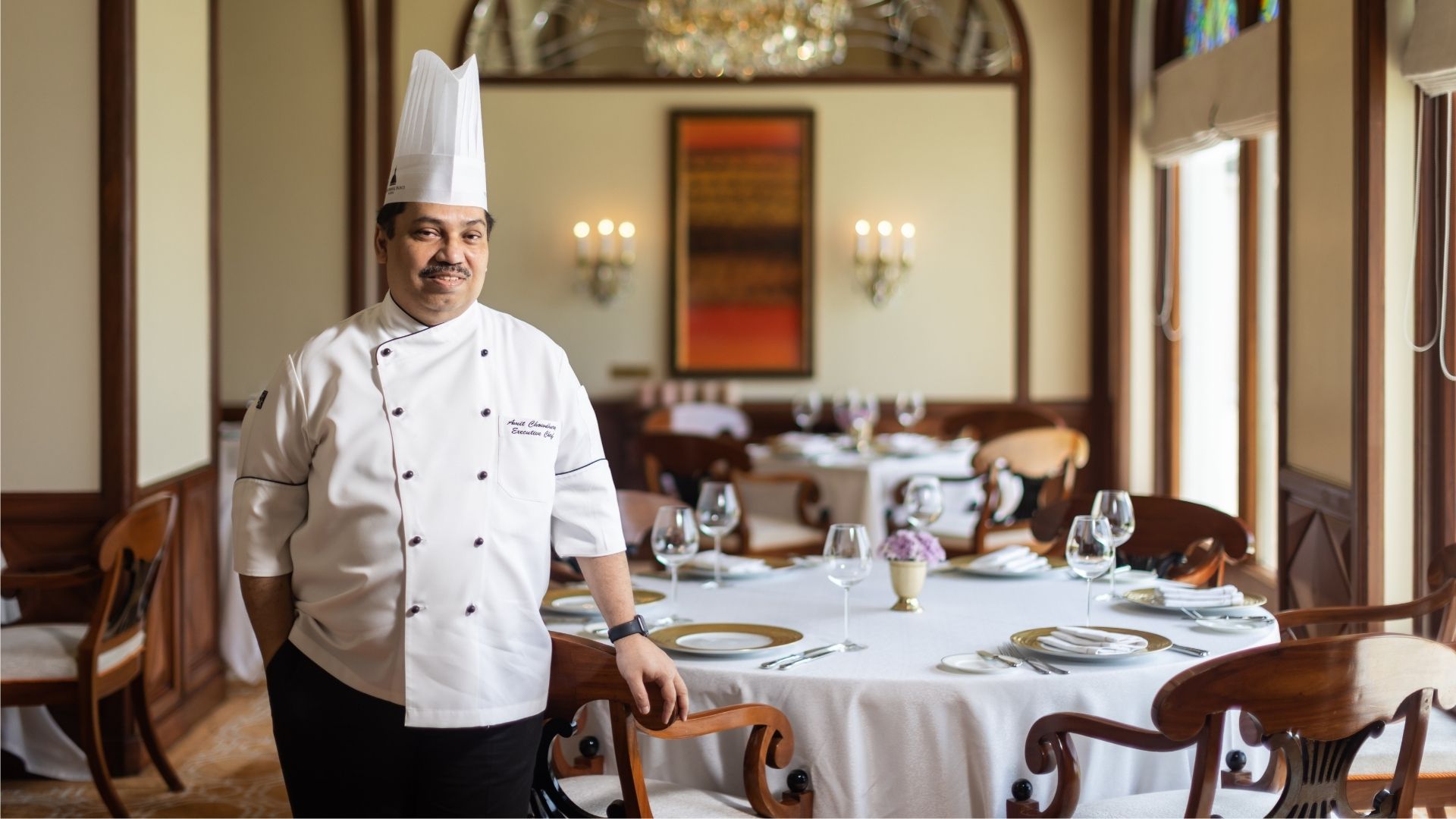
Executive Chef Amit Chowdhary, Souk, The Taj Mahal Palace, Mumbai.
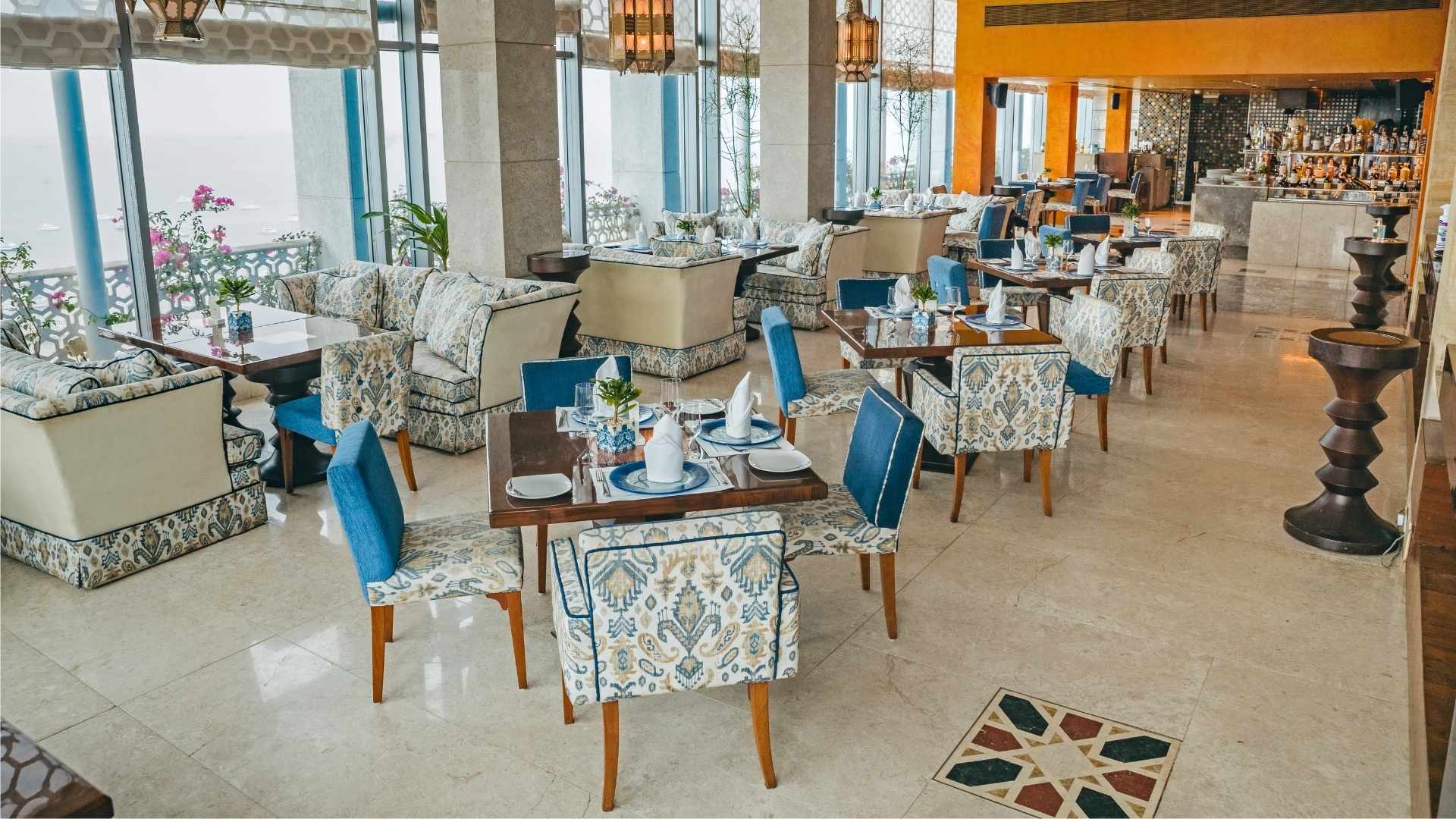
Souk, The Taj Mahal Palace, Mumbai.
Sette Mara-St Regis, Mumbai
The menu at Sette Mara draws from the rich culinary traditions of the Levant and the countries surrounding the Mediterranean Sea. “It’s curated with deep nuances of aromatic spices and wholesome ingredients from the vibrant cultures of Greece, Turkey, Egypt, Morocco, Lebanon, Persia, and Georgia,” says Director of Culinary, Chef Paul Kini.
Sette Mara is a deep blue space, anchored by a suspended navigational constellation compass above the dining area. The lounge and bar evoke the atmosphere of Middle Eastern ports, with burnished rusts, burgundies, and cinnamon tones reminiscent of cargo—spices, wines, and perfumes.
The dishes on the menu share a common geographical thread but are prepared using a variety of techniques and ingredients. “In an effort to change the perception of Middle Eastern cuisine, Sette Mara offers a wide variety of Levantine delicacies that showcase both tradition and the cuisine’s adaptability to modern times,” says Kini.
Highlights include Yemeni Kabsah, Lebanese Baklava, and the Egyptian dessert Umm Ali. Signature kebab platters represent the Mediterranean’s three culinary foundations—farm, ocean, and land: Baharat Spiced Halloumi and Berbere Portobello from the farm, Charred Rock Lobster and Tiger Prawn from the sea, and Lamb Shish and Chicken Taouk from the land.
Alongside traditional Mediterranean mezze like Shakshuka and Dolma, the menu infuses Levantine flavours into dishes such as Vegetables in Za’atar Butter and Baklava Cheesecake. While the flavours often stay rooted in tradition, the plating and presentation are distinctly contemporary. “Many Middle Eastern ingredients are used in other cuisines where their origins go unrecognised,” notes Kini. “Take Halloumi cheese, for instance—it’s salty, tangy, slightly minty, with a firm, chewy texture. We feature it in our hot mezze—Halloumi Sambousek, a crispy, flaky savoury pastry.”
A rare inclusion is Pul Biber, or Aleppo pepper—a coarsely ground, semi-dried, seedless red pepper flake known for its mild heat and fruity tang. It adds depth to the restaurant’s signature spicy harissa, used in dishes like Sette Mara Batata Harrah and Lamb Arayes.
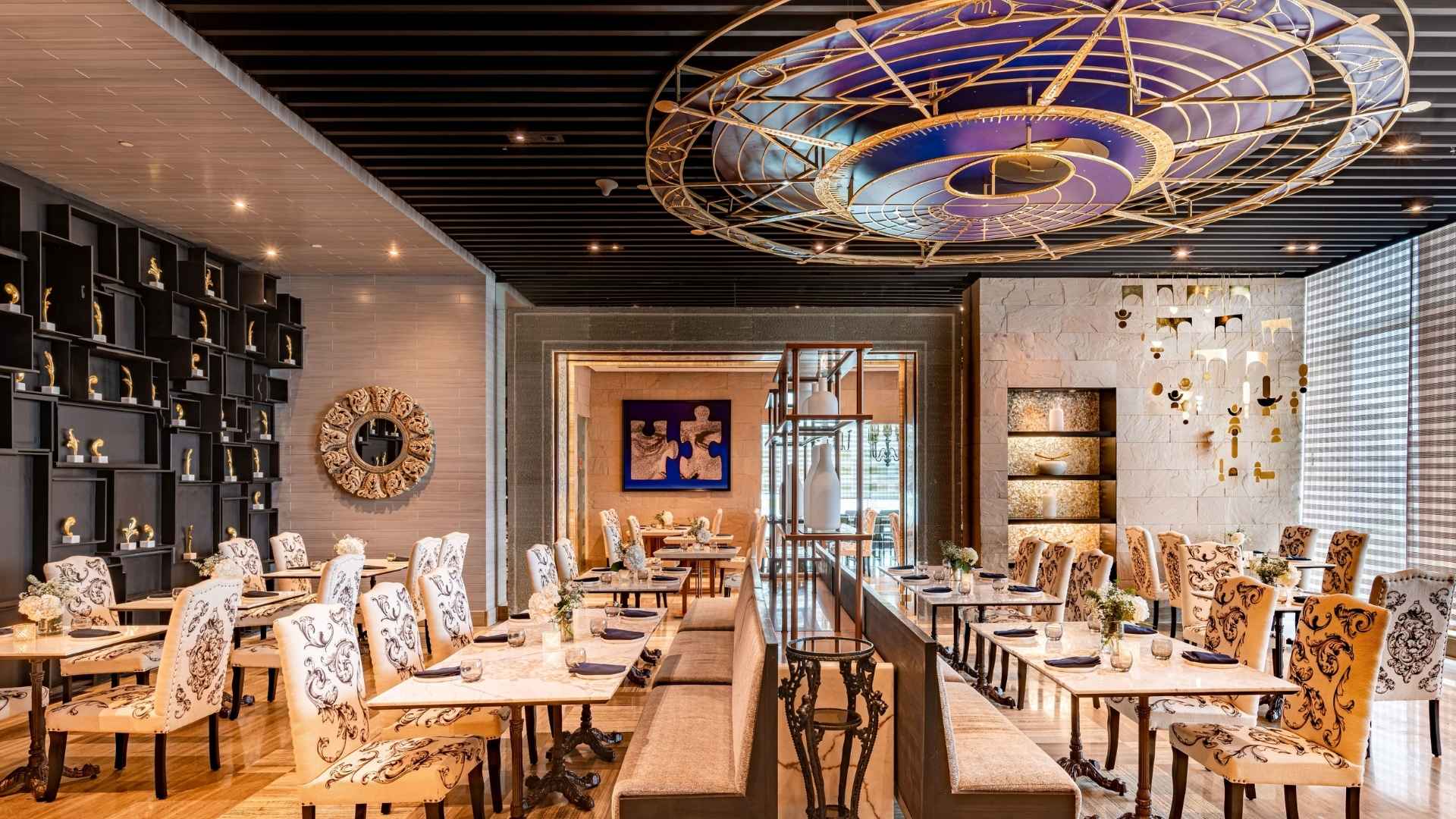
Sette Mara is a deep blue space, anchored by a suspended navigational constellation compass above the dining area.
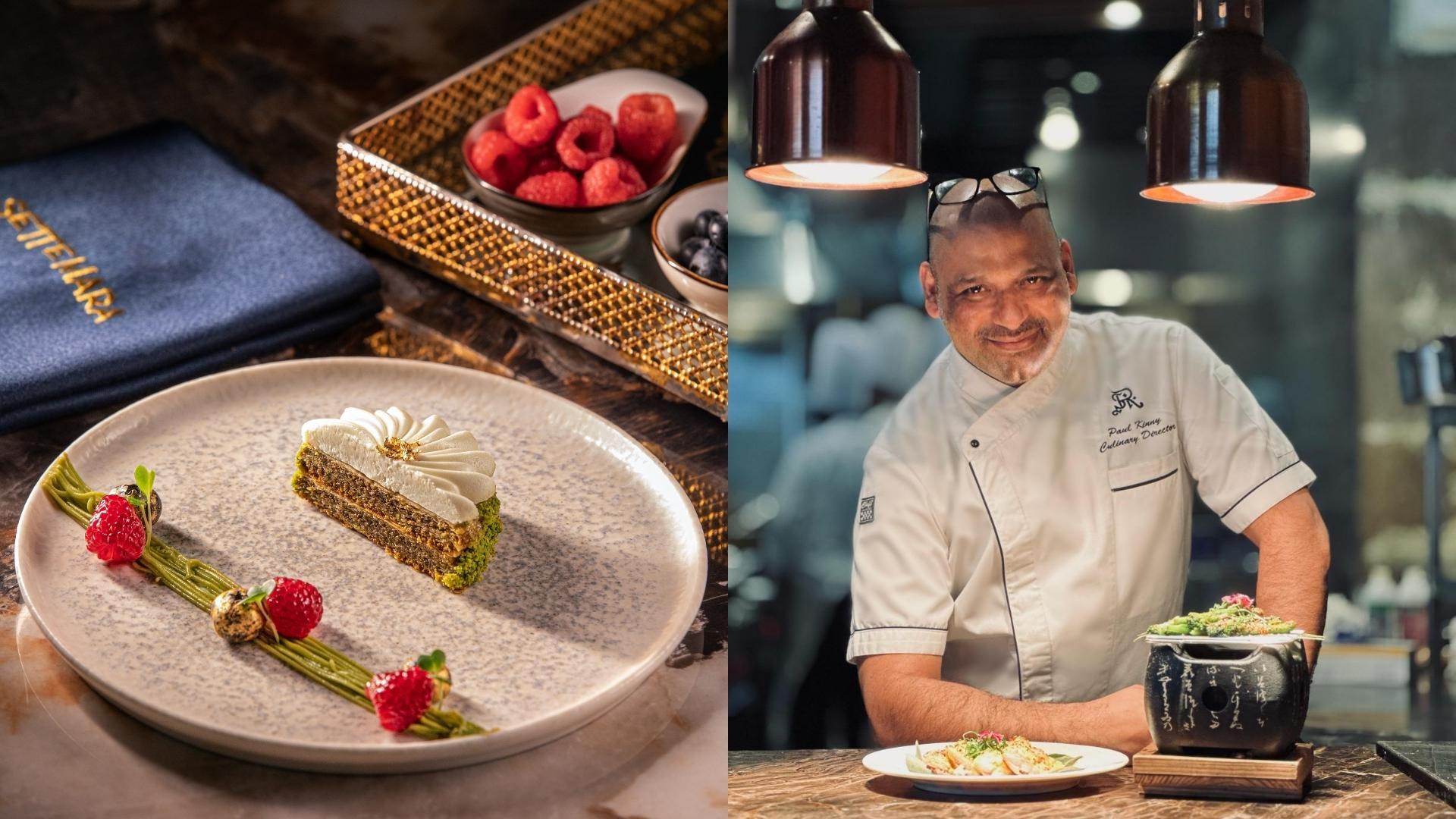
Director of Culinary, Chef Paul Kini.
Anar, Goa
At Anar, a Middle Eastern restaurant with a lush Anjuna field view, bold and beautiful flavours from parts of the Middle East—including Iran—are served in dishes rarely seen before. Head chef Rishabh Law presents a menu where nostalgia meets novelty, drawing from a region connected by shared ingredients and origin stories. “The dining experience at Anar is meant to be immersive, intimate, and transportive,” says Anant Kataria, co-founder of Anar. “The food is Persian-forward but weaves in flavours and influences from Lebanon, Syria, Turkey, Saudi Arabia, the UAE, and Afghanistan.”The open-air space mirrors Middle Eastern aesthetics: red walls, glowing brass accents, and handcrafted furniture set the tone, while playful warrior cat murals add character. The mood shifts with natural light by day and candlelight by night.
Storytelling defines the Anar experience. Pomegranate motifs—anar—appear on the cutlery and throughout the space. “Every detail, from crockery and music to cocktails, is designed to transport the diner,” says Kataria. “We aren’t trying to replicate a single country’s cuisine. Instead, we present a broader, more layered vision of the Middle East—one that balances elegance with comfort, nostalgia with novelty.”
Two dishes particularly stand out—one surprisingly vegetarian in a largely meat-heavy cuisine. Ghormeh Sabzi is a Persian herb stew made with fenugreek, parsley, coriander, dried limes, and slow-cooked kidney beans. “It’s rich, earthy, and comforting—a dish that showcases the complexity of Middle Eastern vegetarian cooking,” says Kataria. The second, Kabab Koobideh, is a Persian-style minced lamb kebab marinated with onion and subtle spices, then grilled over charcoal until juicy and smoky. “Served with sumac onions and saffron rice, it’s a dish that guests return for.”
Also gaining ground is Kabab Torsh—charcoal-grilled beef tenderloin marinated with walnuts, pomegranate molasses, and herbs, served over creamy hummus. “It’s a dish of bold contrasts: the richness of the meat, the tart sweetness of the marinade, and the earthiness of the walnut-herb mix,” Kataria explains.
The bar, Mashrub, crafts cocktails using Middle Eastern ingredients. Anar, the signature drink, is an aromatic blend of gin, pomegranate molasses, Fernet Branca, and sweet vermouth—evoking the essence of a Persian bazaar. Zalabia Walk, made with tequila, grapefruit za’atar shrub, Campari, and soda, is bright, herbaceous, and perfectly bitter. “The goal was to create cocktails that don’t just accompany the food but elevate the entire experience.”
The research behind Anar was deeply personal. “Roshni (Kapoor), my co-founder, and I travelled across the Middle East—exploring homes, kitchens, street food joints, and restaurants. Rather than relying on consultants, we trusted our instincts,” says Kataria. “We experimented, tasted endlessly, and refined dishes until they
felt just right—authentic in soul, but appealing to the modern Indian diner.”
Anar seeks natural overlaps in flavour—spice, tang, smoke—staying true to the region while making it resonate in India.
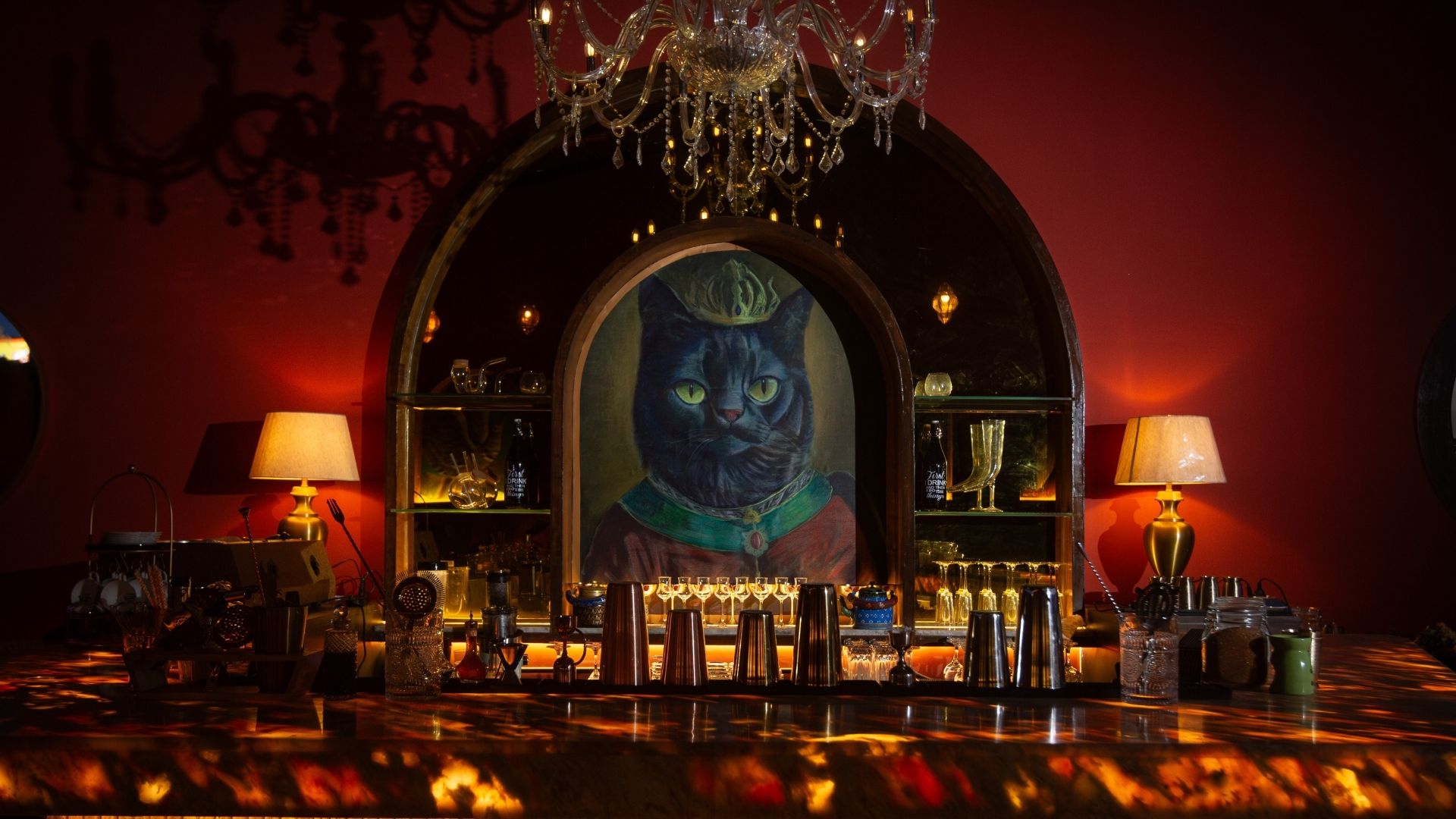
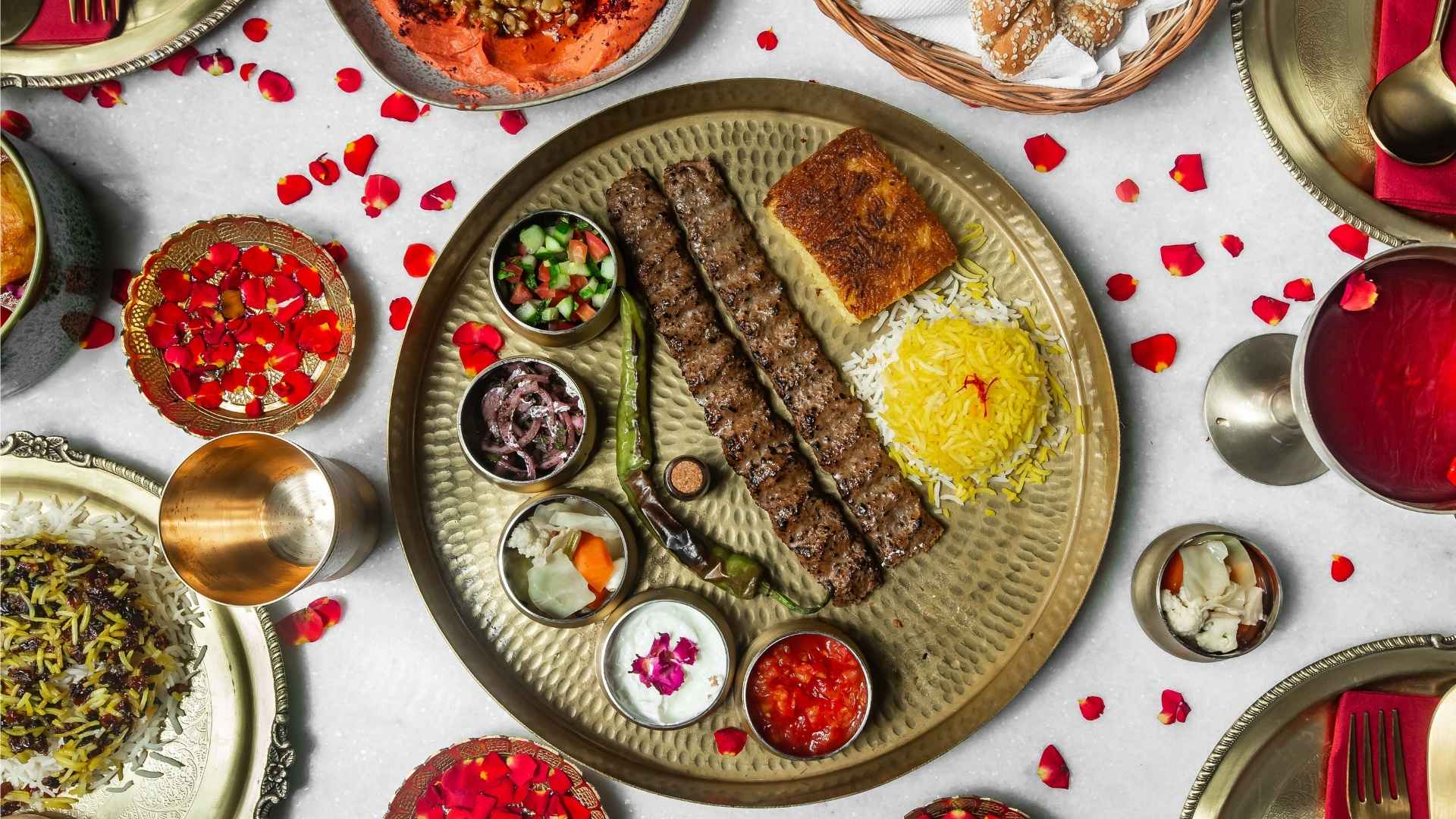
Kabab Koobideh is a Persian-style minced lamb kebab marinated with onion and subtle spices, then grilled over charcoal until juicy and smoky.

















